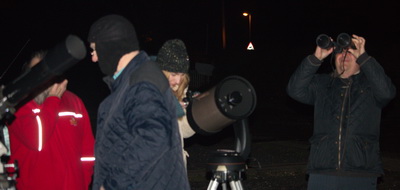.png)
Astronomical Society of Haringey |
.png)
.png)
MEETINGS
UPDATED OCTOBER 2025
IMPORTANT We are continuing to run the general meetings 'virtually' (usually via Zoom) as we currently lack a convenient venue to meet NOTE - you do not need to have any of the usual programs, Skype, Teams or Zoom, actually installed on you computer - you are sent a URL (website link) and you just run that in your browser of choice |
The day for all meetings is generally the third Thursday of the relevant month
But there are the occasional changes, so it is always advisable to double-check the dates below
Correct up until press day, these dates will also be found in the magazine and mentioned on ![]()
Doors open - 7.30pm : Main speaker - 8.00pm. Finish - 10.00pm
Virtual Meetings are current starting at 7.00pm, running until 9.00pm
Meetings directly below are from 2024, back to 2017
Note that the NEXT meeting is always at the top of the list
(Previous meetings move to the bottom of the relevant year)
Clicking on photos where relevant (when you hover the mouse, the border will change colour) will bring up other websites or Facebook pages.
2025 |
|||||
NEXT FRIDAY October 17 21st 2025 Observing Evening
|
Observing Evening
Observing Evening run by Chairman Jim Webb and Secretary Alister Innes, at the usual location - Meeting starts - 19.00hrs / 7.00pm. Recommend you get there 6.30 Bring a telescope if you have one - NOTE we continue to hold Observing Evenings on the FRIDAY of the relevant week |
||||
| previously for 2025 | |||||
THURSDAY January 16th 2025 Dale Baker |
THIS WILL BE A VIRTUAL MEETING via Zoom] Doctor Who - Part 4 : Matt Smith to Peter Capaldi With 'New Who' having been established in 2004, and with the first 'new' Doctor, played by Christopher Eccelston departing after one season, there began the morphing into the Doctor's new face... First into David Tennant, then we come to the subjects of Part 4 - Matt Smith and Peter Capaldi. Dale takes us through the stories of what are generally known as the 11th and 12th Doctors.
|
||||
THURSDAY February 20th 2025 Jerry Stone, FBIS, FRAS |
THIS WILL BE A VIRTUAL MEETING via Zoom] Is Pluto A Planet?
|
||||
FRIDAY March 21st 2025 Observing Evening
|
Observing Evening
Observing Evening run by Chairman Jim Web at the usual location - Meeting at 19.00hrs / 7.00pm NOTE we continue to hold Observing Evenings on the FRIDAY of the relevant week |
||||
|
THIS WILL BE A VIRTUAL MEETING via Zoom] The Missing Cosmic Key At this time there is an increasing interest in space and what it contains. There are countless sightings of what some regard as ‘alien’ vehicles and probes. However all through this there is one basic principle which is unknown to most people.
image : the 'interstellar asteroid' 'Oumuamua / NASA artist impression |
||||
THURSDAY May 15th 2025 Members of the Society
|
THIS WILL BE A VIRTUAL MEETING via Zoom small talk In 2022 we wrote "It's been almost 10 years since our last Small Talk, (October 2012), so now it's been thrre years since, then, so the Chairman has decided, "Time for another". To give you some ideas, the 2022 meet include Mike Zelechowski describing how he built his first roll-off observatory. Other subjects over the years have included the largest mounbtain Spain, ie Teide in Tenerife; the Meade telescope; images from Cassini and Blake's 7! |
||||
THURSDAY June 196th 2025 Jim Webb
|
THIS WILL BE A VIRTUAL MEETING via Zoom] CERN Takes a Pill
|
||||
| JULY and AUGUST 2025 | Summer Break
|
||||
SEPTEMBER 18th 2025 Professor Garry Hunt OBE
Images ; above : Garry Hunt, right : Mat Irvine |
THIS WILL BE A VIRTUAL MEETING via Zoom]
19.00hrs / 7.00pm Lessons from Voyager & 50 years of Space Exploration; Challenges for the Future
|
||||
| previously for 2024 | |||||
FRIDAY November 22nd 2024 Jim Webb |
Observing Evening
Observing Evening run by Chairman Jim Web at the usual location - Meeting at 19.00hrs / 7.00pm NOTE we continue to hold Observing Evenings on the FRIDAY of the relevant week The temperatures have been dropping (drastically) so wrap up warm! The fall-back position for if we arrive and the weather is unsuitable - a Virtual Observing Meeting at the local pub! See OBSERVING for the map and details |
||||
Thursday October 17th 2024 Jim Webb
|
THIS WILL BE A VIRTUAL MEETING via Zoom] Astrophotography : The First Two Centuries Chairman Jim will be looking at how photographing the skies had developed in parallel with how photography itself has developed. Initially this would have been on glass plates invariably involving very long exposures and then over a century where the dominant medium was photographic film. Now things have moved from where collection was totally optical, to these days where 'digits' have taken over, and optical has moved in great part, to electronics and computers |
||||
Thursday September 19th 2024 Dr Richard Greenwood
|
THIS WILL BE A VIRTUAL MEETING via Zoom] A Meteorite Killed My Cow
|
||||
Thursday June 20th 2024 Mat Irvine FBIS |
THIS WILL BE A VIRTUAL MEETING via Zoom] SPACE - As It Should Have Been
|
||||
Thursday May 16th 2024 Jerry Stone FBIS, FRAS Photo : Mat Irvine |
THIS WILL BE A VIRTUAL MEETING via Zoom] Island Zero
|
||||
Thursday April 18th 2024
|
THIS WILL BE A VIRTUAL MEETING [ZOOM]
19.00hrs / 7.00pm This will be a report on the Total Solar Eclipse that passes over Mexico, the US and Canada on 8th April
|
||||
Friday March 22nd 2024
|
Observing Evening
Observing evening run by Secretary Alister Innes at the usual location - Brunswick Park, Osidge Lane, Barnet. Meeting at 18.00hrs / 6.00pm NOTE ONE HOUR EARLIER THAN USUAL NOTE we continue to hold Observing Evenings on the FRIDAY of the relevant week The temperatures have been above the average, but still wrap up warm! See OBSERVING for the map and details |
||||
FRIDAY
|
Observing Evening
cancelled due to weather conditions
|
||||
Alister Innes FRIDAY January 19th 2024
|
Observing Evening
Observing evening run by Secretary Alister Innes at the usual location - Brunswick Park, Osidge Lane, Barnet. Meeting at 19.00hrs / 7.0opm NOTE this is Friday, which has been the day for the previous few Observing Evenings. Remember to wrap up warm! See OBSERVING for the map and details |
||||
| previously for 2023 | |||||
Dale Baker January 19 2023 photos : Mat Irvine
|
THIS WILL BE A VIRTUAL MEETING [ZOOM] FROM SYLVESTER McCOY TO PASTURES NEW [The Ages of Who - Part 3]
|
||||
Alister Innes FRIDAY February17th 2023
|
OBSERVING EVENING 17th February 2023 |
||||
Alister Innes FRIDAY March17th 2023
|
OBSERVING EVENING 17th March 2023 !!! REMEMBER THIS IS FRIDAY !!! Ideally arrive slightly before 7:00pm so that you can start setting up while it is still light Drop your kit off at the gate and then park on the marked line shown on the map It is still cold at night - so wear something warm The Moon is near new, so with the skies clear, should make for good viewing - assuming no cloud cover! If the weather is bad and we cannot observe, we can retire to The Osidge Arms (see map)click on map for a larger verison |
||||
Alister Innes FRIDAY March 17th 2023
|
OBSERVING EVENING 17th March 2023 |
||||
Jim Webb THURSDAY May 18th 2023
|
THIS WILL BE A VIRTUAL MEETING [ZOOM] PECULIAR GALAXIES
|
||||
Mat Irvine June 15th 2023 photos - Mat Irvine |
THIS WILL BE A VIRTUAL MEETING [ZOOM]
19.00hrs / 7.00pm Deep Skies : The Space Sites of the Southwestern States The skies of the southwestern states of the USA are wide and open, and the area is home to many 'space sites'. These include optical observatories, radio observatories, rocket launch sites, museums, oh, and a possible crash site of an alien spaceship... Based on an original talk, this has been updated.
|
||||
| July and August | SUMMER BREAK
|
||||
September 21st 2023 Mat Irvine |
THIS WILL BE A VIRTUAL MEETING [ZOOM]
|
||||
October 19th 2023 |
Cancelled due to techical problems and unforeseen circumstantances | ||||
November 23rd 2023 (delayed a week to continuing technical problems) Mat Irvine
|
THIS WILL BE A VIRTUAL MEETING [ZOOM]
|
||||
| MAT -23 (or "Mat's Astro Tours - 2023") | |
|---|---|
| ASH Editor, Mat Irvine, contunes his semi-regular look at the astronomical and space sites in the USA with a talk on his visit in October. photos - Mat Irvine |
 |
December
Winter Break
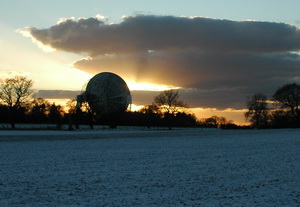 Jodrell Bank Mk 1A in the snow - photo - Mat Irvine
Jodrell Bank Mk 1A in the snow - photo - Mat Irvine
Jim Webb
January 20 2022

photo above : Mat Irvine
right : NASA/JPL
THIS WILL BE A VIRTUAL MEETING [ZOOM]
19.00hrs / 7.00pm
PICS IN SPACE
ASH Chairman Jim Webb looks at the way space imaging has changed over the years, from ground-based telescopes, through to larger and larger telescopes being placed in orbit. This has recently culminated with the largest such observatory so far being orbited, the James Webb Space Telescope (No relation to the Chairman!)
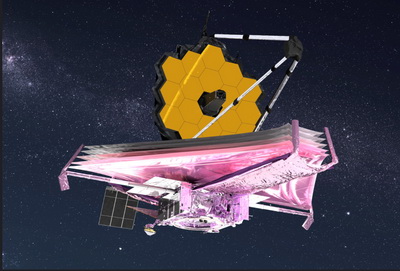
Members of the Society
February 17, 2022
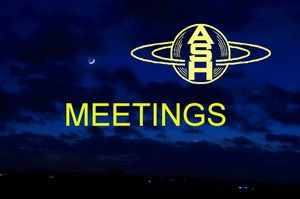
photos : Mat Irvine
THIS WILL BE A VIRTUAL MEETING [SKYPE]
19.00hrs / 7.00pm
small talk
It's been almost 10 years since our last Small Talk, (October 2012), so newer members may wonder what this is all about?
It originally came about as we found some members had enough information for a - literally - small talk, but not enough for a full meeting. So we put them all together and allowed them to speak for, well, a small length of time, (the exact length didn't really matter). Sometimes we did a meeting with just two speakers, and there was at least one where five spoke. It can also generate some healthy debate.
Above - as an example - the January 2005 small talk, which had the five speakers -
l-r - Gary Marriott, Charles Towler, Michael Franks, Mike Roberts and Mat Irvine,
- and the topics...(again l-r) first pictures from Huygens; Transit of Venus; Highest point in the Canaries - Mount Teide; the Meade ETX105 telescope; and Blake's 7....
March 17, 2022
DALE BAKER
photos : Mat Irvine
 |
THIS WILL BE A
Dale Baker continues his look at the actors who have played Doctor Who over the years This time almost a 'Bakers Dozen' (well three anyway) with Dale (Baker #1) looking at Tom Baker #2, to Colin Baker, #3, not forgetting of course, Peter Davison in between |
Jim Webb & Alister Innes
April 21 2022

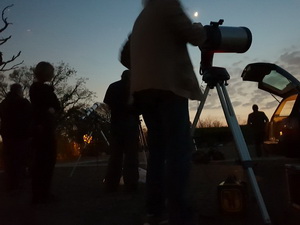
OBSERVING EVENING
BRUNSWICK PARK, OSIDGE LANE, BARNET
Ideally arrive about 7:30pm so that you can start setting up while it is still light
Alister and I will be there to greet you.
Drop your kit off at the gate and then park on the marked line shown on the map
It could be a coldish evening so wear something warm
If the weather is bad and we cannot observe, we can retire The Osidge Arms (see map)click on map for a larger verison
for a virtual observing meeting
Jim Webb, Chair
Jerry Stone FBIS
May 19 2022
Jerry Stone is a Freelance Space Presenter, giving presentations on a wide range of astronomy and space exploration topics across the UK and abroad.
EXPLORING THE HIGHLANDS OF THE MOON
Celebrate the 50th anniversary of Apollo 16
| Apollo 16 was the second of the “J” missions, where the scientific content was increased by both the extended time on the Moon and the inclusion of a Lunar Roving Vehicle, which allowed the astronauts to cover a much greater area of the lunar surface. Apollo 16's landing almost didn't happen, due to a problem with the Service Module’s main engine and the rules regarding astronaut safety. However, this was overcome. The landing site in the Descartes Highlands offered dramatic views with mountains and large rocks. Viewers back on Earth were able to follow the activities of John Young, making his fourth spaceflight, and Charlie Duke, the youngest person to walk on the Moon. Apollo 16 was also the only mission to put a telescope on the Moon – designed to operate in ultra-violet light – and it also included the Lunar Olympics and a Grand Prix! |
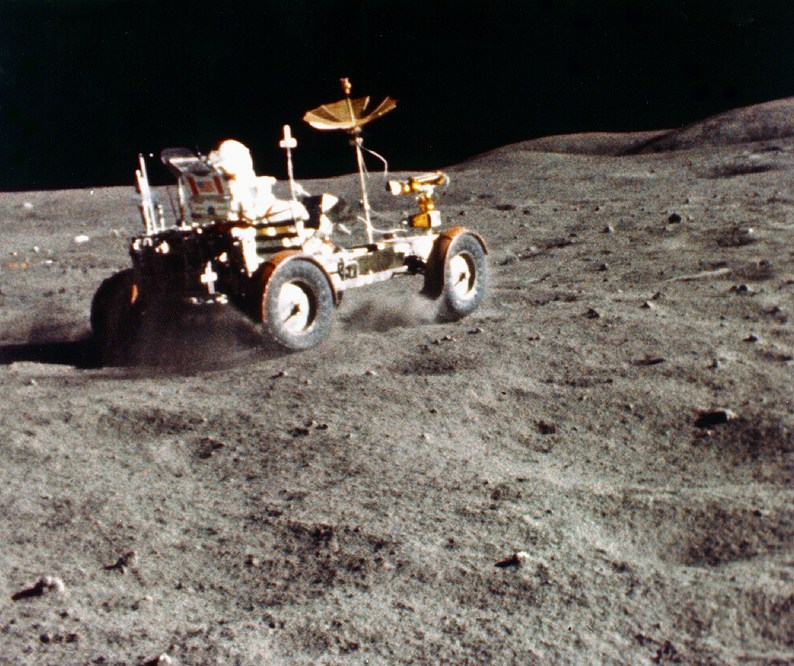 |
Tony Sizer
June 16 2022
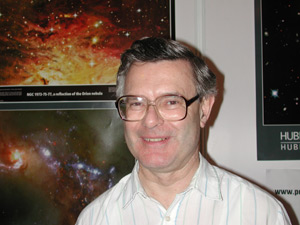
HOW THE MILKY WAY GOT ITS ARMS
Rudyard Kipling, in the Just So Stories, tells us how the leopard got its spots and how the rhinoceros got its skin but never mentions how the Milky Way got its arms? Yet spiral galaxies, of which the Milky Way - or 'our Home Galaxy ' - is one, are one of the most common types of galaxy. Tony Sizer gives one idea as to how spiral arms might form - with a little help from sandcastles and motorways. Tony is a member of the Orpington Astronomical Society, and was regular speaker to the Society. However this hasn't occurred for some years now, so a welcome return. Image : Robert Hurt, IPAC; Bill Saxton, NRAO/AUI/NSF |
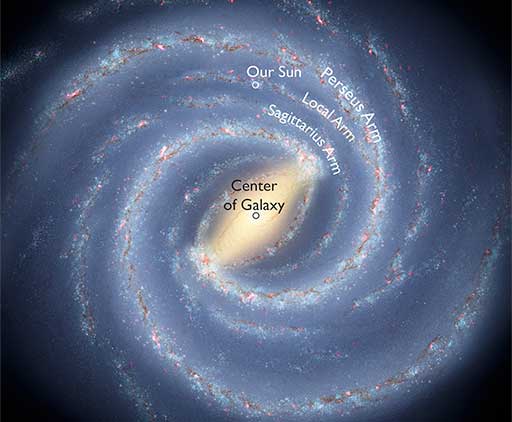 |
Alister Innes
NOTE CHANGE OF DAY
FRIDAY
September 16 2022
(not the usual Thursday)
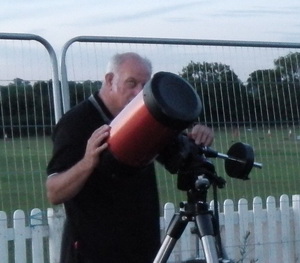
OBSERVING EVENING
BRUNSWICK PARK, OSIDGE LANE, BARNET
The nights are drawing in, so darker a bit earlier each evening, and a lot to see 'up there'
The Summer Triangle, the asterism of the three bright stars Vega, Deneb and Altair are very prominent,
and you can't really miss Jupiter Ideally arrive at our traditional 'start' time - 20.00hrs/8:00pm - so that you can start setting up while it is still light
Alister will be there to greet you
Drop your gear off at the gate and then park where marked on the map
It's getting slightly chillier in the evenings, so it is advisable to wear something warm
If it's totally overcast or the weather is bad and we cannot observe, we can retire to The Osidge Arms (see map)click on map for a larger verison
for a virtual observing meeting Any questions email observing@ashastro.co.uk
Jim Webb, Chair
October 20th
Mat Irvine
VIRTUAL MEETING [ZOOM] 19.00hrs / 7.00pm
IT STARTED IT WITH A BEEP
This month has a significant date in any space enthusiast's calendar - the 4th. It was on that date that the world's first artificial satellite was launched - Sputnik 1. As far as satellites in general go, it was hardly sophisticated, but it will always hold the record as 'the first'. But everyone assumed that the Americans would get there first - so what gave the Soviet Union the advantage? Mat explains that is was basically down to the lack of technology that won, and looks back at what put the Soviets in the running for this achievement. We do, ahem, of course have this current situation with Russia vs The Rest of the World (well most of it..), which seem highly unlikely to have been resolved by this month. But always remember : |
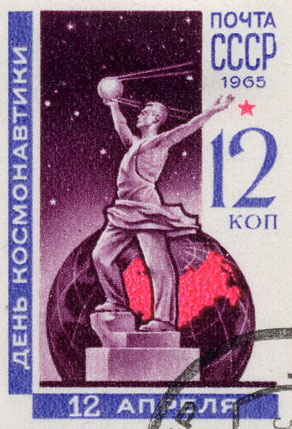 |
|---|
November 17th
Jerry Stone FBIS
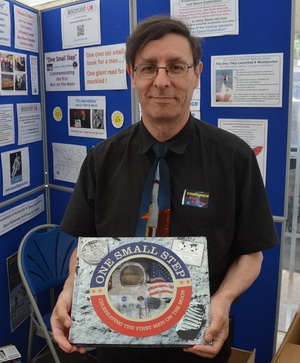
VIRTUAL MEETING [ZOOM] 19.00hrs / 7.00pm
APOLLO 17 : THE LAST MEN ON THE MOON - FOR NOW!
As we start the new NASA era of crewed space exploration with Project Artemis, Jerry completes his round-up of 50 years of the Project Apollo Missions with Apollo 17. Launched 7th December 1972, the mission lasted over 12 days until the splashdown on 19th. It carried the crew of the Commander Gene Cernan, Command Module Pilot, Ron Evans and Lunar Model Pilot, Harrison Schmitt. Schmitt was the first - and only - Apollo astronaut to be a scientist first and an astronaut second and was chosen as they needed a geologist on the Moon! He was - to date - the last person to step down onto the Lunar surface, though not the last - to date - to actually stand on the Moon, as Cernan, as Commander, was the last to leave. Loads more of intriguing details in Jerry's talk. |
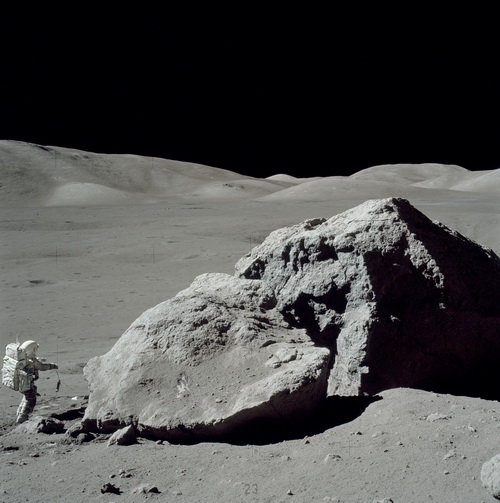 |
|---|
December
No Meeting This Month
WINTER BREAK
But the skies are still there and although outside will be crisp and cold, it is more likely to be clear, so be sure to wrap up warm, and 'look up'

January 21, 2021
Dr Andrew Ball
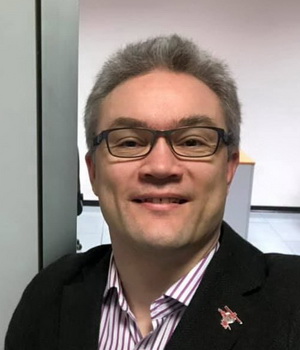
Images
Andrew Ball - courtesy himself
ExoMars - artist impression on Mars
Roll mouse over image for the Rover under test - ESA
THIS WILL BE A VIRTUAL MEETING [ZOOM]
19.00hrs / 7.00pm
THE EXOMARS MISSION : ORBITING, LANDING, ROVING AND DRILLING ON MARS
February 18, 2021
ANOTHER CHANGE OF TALK

images - NASA/JPL Caltech
THIS WILL BE A VIRTUAL MEETING [TEAMS]
19.00hrs / 7.00pm
THE LANDING OF PERSEVERANCE
The landing of NASA's Mars Rover, Perseverance, precisely coincides with the next meeting, so we have decided to devote the meeting to this
|
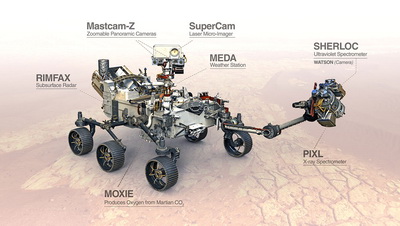 |
March 18, 2021
Keith Pritchard
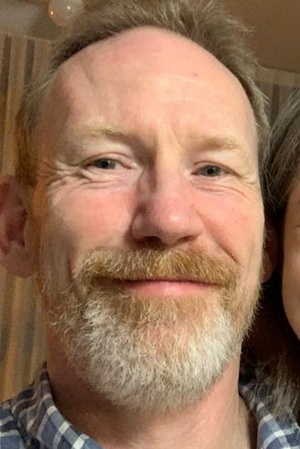
Images -
Orion Nebula and himself -Keith Pritchard
The Stellina telescope -Vaonis
THIS WILL BE A VIRTUAL MEETING [TEAMS]
19.00hrs / 7.00pm
FIRST LIGHT
Keith posted some amazing images on the ASH facebook page, that he had shot using his new Stellina telescope, designed and built by the French company, Vaonis. Stellina is basically a camera with a long lens. It used a CCD for imaging, the results then viewed on whatever screen you want. Some processing has to be done, but given Keith is working in London area, the results are amazing - such as the Orion Nebula - below |
|
The Sellina below - Keith will be explaining the way it all works during this meeting
|
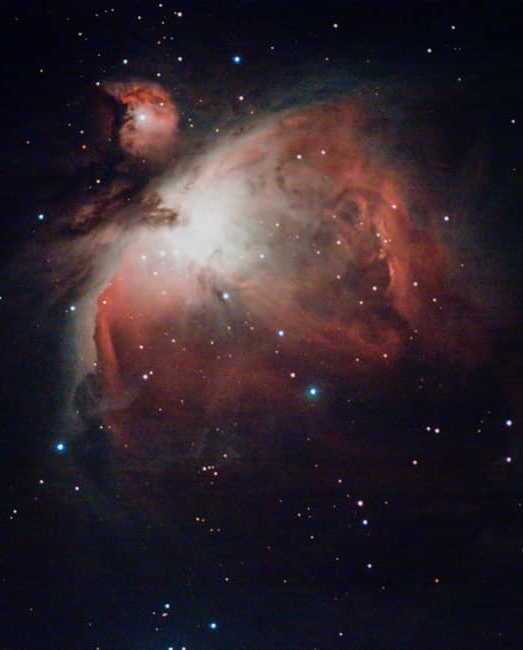 |
APRIL 22, 2021
Jim Webb

photo : Mat Irvine
THIS WILL BE A VIRTUAL MEETING [TEAMS]
19.00hrs / 7.00pm
“HE DARED TO GO – FIRST…”
| America may have had Buck Rogers and Flash Gordon, but we had Dan Dare! ASH Chairman, Jim Webb, has always had a fascination with the 'Pilot of the Future', and for this meeting takes us through many of the aspects of the most famous character to come out of The Eagle comic |
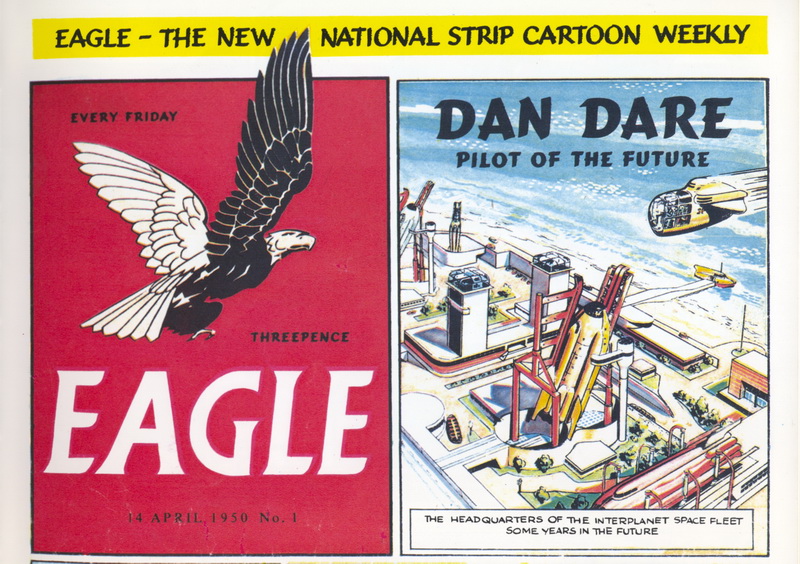 |
MAY 20, 2021
Russell Parry
photos : courtesy of Russell Parry
THIS WILL BE A VIRTUAL MEETING [TEAMS]
19.00hrs / 7.00pm
APPLEY BRIDGE METEORITE –
THE SPACE ROCK THAT HIT LANCASHIRE
This is the fascinating story of the fall and find of the Appley Bridge meteorite in 1914 as told through newspaper reports and archive documents of the time. It tells the story of the confusion with enemy Zeppelins, the confiscation of the meteorite by the police and its subsequent release for analysis. Russell has many previously unseen photographs of the meteorite and images provided by various organisations around the World. He has written a 3-part play for Radio 4, based on his book. This is currently in pre-production, for a planned transmission later this year.
|
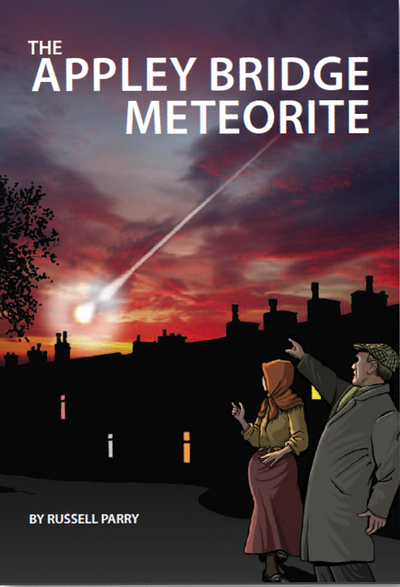 |
June 17, 2021
Dr Martin Braddock

photo courtesy of Martin Braddock
THIS WILL BE A VIRTUAL MEETING [TEAMS]
19.00hrs / 7.00pm
FUTURE CONCEPTS FOR SPACE TRAVEL
– LIFE JIM BUT NOT AS WE KNOW IT
Human beings are poorly adapted to live and work in space. To date, space missions rarely reach durations of longer than 6-9 months and during that time astronauts experience an environment that affects their physical and psychological well-being.
In this talk Martin reviews the safety record of space travel and the some of the major effects of microgravity on astronaut health and the mitigation measures that are in place. With a future-looking lens, he will consider the possibilities for deep space travel and the challenges that need to be overcome to permit long term missions,and asks - and attempts to answer -some of the ethical questions raised.
He asks that you please come with an open mind!
Dr Martin Braddock is a professional scientist and project manager working in the field of drug discovery and development with 36 years’ experience of working in academic institutes and large corporate organisations. He holds a BSc in Biochemistry and a PhD in Radiation Biology (from the Radiation Biology Unit, Atomic Energy Research Establishment, Harwell Oxfordshire), is a former Royal Society University Research Fellow at the University of Oxford. He is currently working somewhere definitely in the news - AstraZeneca.
He has a serious interest in astronomy and in 2015 was elected Fellow of the Royal Astronomical Society. He is passionate about all aspects of Astronomy, Cosmology and Astrobiology, holds University qualifications in Cosmology, Astronomy and Planetary Sciences and Astrobiology from the University of Central Lancashire and Open University and is working towards an MSc in Space Science and Technology. Martin is an active committee member of the Mansfield and Sutton Astronomical Society and Newton’s Astronomical Society at Woolsthorpe, supporting these registered charities at public open events and regular society meetings.
September 16, 2021
Jerry Stone FBIS
Jerry is well known to members of ASH, having given us at least one presentation each year for the last 15 years!
He is a Freelance Space Presenter, giving talks all over the UK and abroad, and is an acknowledged space expert, particularly on Apollo
THIS WILL BE A VIRTUAL MEETING
19.00hrs / 7.00pm
HOW WE REACHED THE MOON
When the Soviet Union stunned the United States by launching the first artificial satellite and also put the first man into space, America had to respond - and to do so in a way that would clearly show a superiority in space exploration.
So, in 1961, President Kennedy laid down a bold challenge - to "Land a man on the Moon and return him safely to Earth - and to do it before the end of the decade!"
Yet at that time, the Moon rocket only existed on paper, and the landing craft hadn't even been designed, so how did they do it, and what were the chances that conspired to determine that Neil Armstrong would become the first person to walk on the Moon?
We follow the Apollo Program, from its beginnings to achieving its objective, from tragedy through to triumph, in Jerry's highly visual presentation that looks in detail behind the scenes at this magnificent achievement.
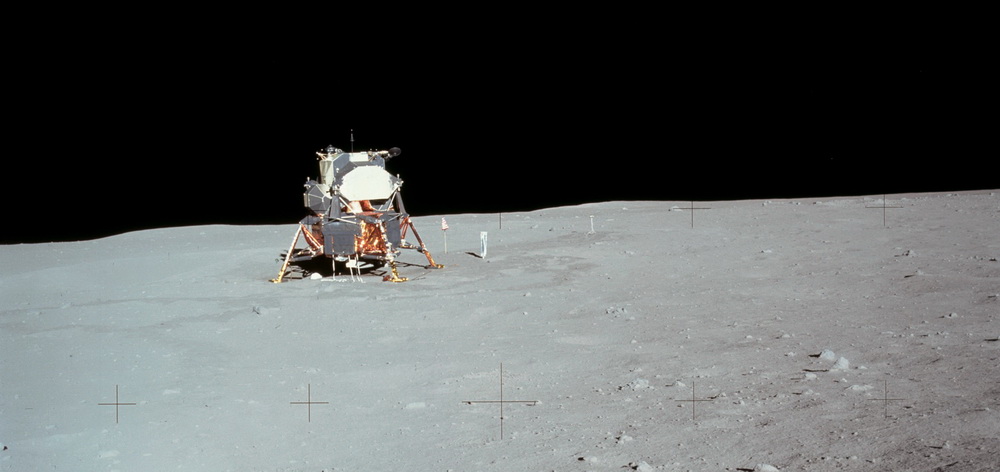
photos - left: Mat Irvine, right: NASA
October 21, 2021
Dr Peter Altman
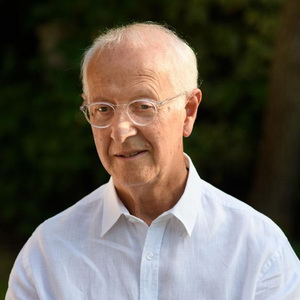
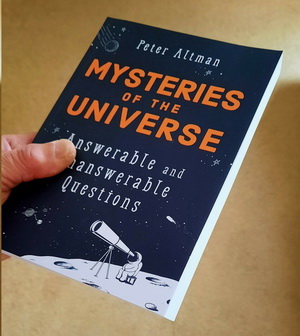
THIS WILL BE A VIRTUAL MEETING [ZOOM]
19.00hrs / 7.00pm
ALIEN LIFE - What are the Chances?
The concept of alien life, for many years relegated to the realms of Science Fiction, is now mainstream. Rovers on Mars are actively looking for biological signatures, over 4,000 exoplanets have been discovered, many with Earth-like properties, and Astrobiology is now a respected branch of Science. As Arthur C Clarke once said, “Two possibilities exist: either we are alone in the Universe or we are not. Both are equally terrifying.” It’s not possible to prove the absence of alien life but much effort is being put in to obtain evidence for its existence. Dr Peter Altman trained as a biochemist and now works as a science writer and speaker. His areas of special interest include cosmology, biochemistry and photography. He is the Founder and Chairman of the Bricket Wood Science Group and a member of the Magic Circle in London. This talk is based on his book 'Mysteries of the Universe – Answerable & Unanswerable Questions' photos - left : Peter Altman; right : Mat Irvine |
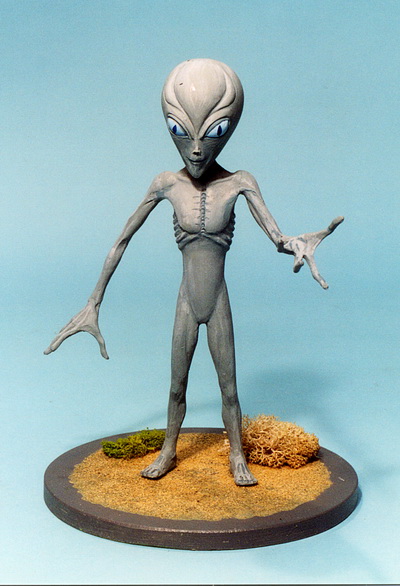 |
POSTPONED from earlier in the year
November 18, 2021
Dale Baker
photos : Mat Irvine
THIS WILL BE A VIRTUAL MEETING [ZOOM]
19.00hrs / 7.00pm
THE AGE OF WHO
Dale has always been fascinated with on-screen science fiction, so this time he take a look at the world's longest-running SF series, Doctor Who, though from a slightly different point of view. He will be looking at the Doctors themselves - how they differed and how the various actors portrayed them - even if they are of course the portraying same person... |
 |
December 2021
CHRISTMAS BREAK

design and photo: mat irvine
January 16th
Dale Baker
LIFE - WITH STRINGS ATTACHED - PART 2
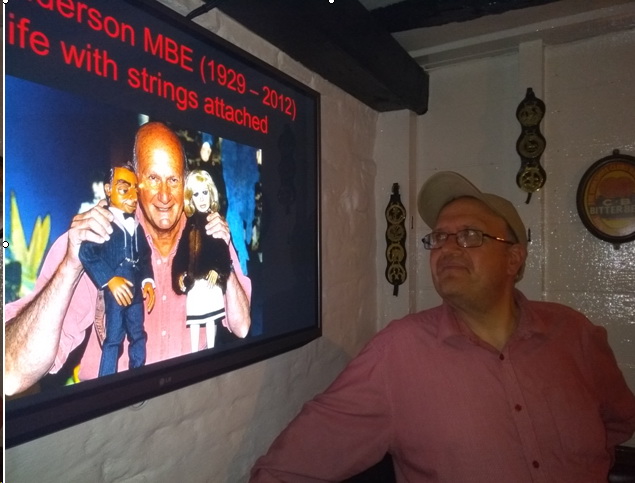
Having been postponed from October 2019, we are pleased to say we can finally present Part 2 of Dale's intriguing look at the Pioneer of Puppetry - sixties style - the Life & Times of Gerry Anderson.
February 20th
Jim Webb
photos : Mat Irvine
SNAPSHOT OF THE UNIVERSE
A subject that often comes up as something we should literally be looking at, astrophotography will be the subject of this Meeting - overseen by our Chairman, Jim Webb
OBSERVING EVENING
Cancelled due to the COVID 19 situation
May 21st 6.00pm
Michael Franks
photo : Mat Irvine
VIRTUAL MEETING [ZOOM]
ASTROBIOLOGY :
THE SEARCH FOR LIFE ELSEWHERE IN THE UNIVERSE
Michael will be looking at the evolution of life on Earth. How life - as we know it - works and where we might find life elsewhere. This will include an examination - and explanation - of the infamous Drake Equation! He will look at the history of searching for life on Mars; the first landers on Mars – Viking; the Allen Hills meteor; and other traces of life on Mars. The talk will review the other places where we might life in the Solar System, such as Europa, Titan, Enceladus and Miranda. Then further out into the Universe where exoplanets get a mention. Image - |
 |
June 18th
Bill Barton
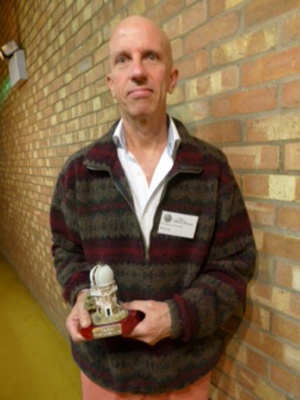
VIRTUAL MEETING 18.00hrs / 6.00pm [ZOOM]
FIAMMETTA WILSON, MANDOLINS & METEORS
Having initially been destined for a life in music (as many ladies were in her time), she then discovered astronomy, and particularly meteors. Between the years 1910 to 1920, she observed about 10,000 meteors and accurately calculated the paths of 650 of them. Bill Barton FRAS, is Deputy Director, image courtesy The British Library |
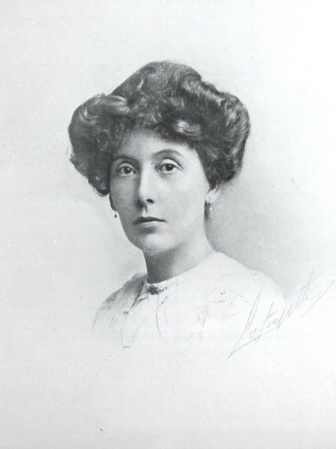 |
July 16th
Mat Irvine
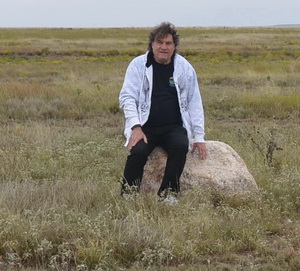
VIRTUAL MEETING [ZOOM]
ROBERT vs THE FLYING SAUCERS
This slightly odd title (?) reflects the equally odd situation of a certain small town in New Mexico, USA that in the 20th Century boasted two significant 'space events'. |
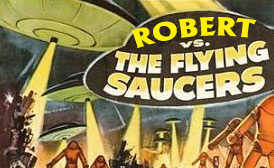 |
This talk was given in 2015 in its original form, but that was five years ago - and this version is modified and updated!
August
Summer Break
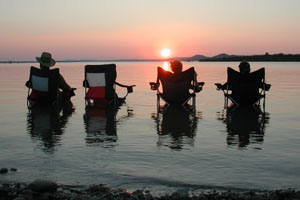 photo © Mat Irvine
photo © Mat Irvine
September 17th
7.00pm / 19.00hrs
Ron Miller
photos : Mat Irvine
VIRTUAL MEETING [SKYPE]
A LIFE IN SPACE
As we are having to hold meetings in a slightly different way, why not take advantage of the fact that the speaker does not have to be ‘local’ – or even in the same country? So for the first time ever for the ASH, we are very pleased to announce that our guest for this meeting will be speaking from Virginia, USA! The speaker is Ron MiIler, one of the foremost space artists in the States – and the world. Author of many books on astronomy and space travel, Ron has also designed a set of stamps of the planets for the US Post Office, was a producer on the documentary about the earlier American space artist Chesley Bonestell; and even created his own comic book hero – or rather heroine - Velda : Girl Detective! |
 |
October 8th
NOTE EARLIER DATE TO COINCIDE WITH SPACE WEEK
Michael Franks
photo : Mat Irvine
THIS WILL BE A VIRTUAL MEETING [Teams]
THE MARTIAN DICHOTOMY
- with a nod to Edgar Rice Burroughs
Forget your Olympus Mons, or Valles Marineris, probably the strangest feature on Mars is the distinct difference in elevations between the northern and southern hemispheres.
Known as the Martian Dichotomy, this difference can be up to three kilometres.
Basically is comes down to the north is fairly flat, while the south is mountainous.
Michael will examine the various hypotheses as to why this should be?
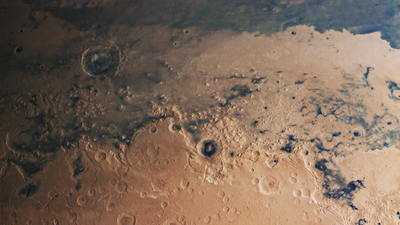
Image Credit: ESA/DLR/FU Berlin,
November 19th
NOTE - Moved from the September date
Jerry Stone
photo : Mat Irvine
THIS WILL BE A VIRTUAL MEETING
THE ISS @ 20

Several space stations have been put into orbit, but the one that is most well known, and the largest by far, is the International Space Station, which has now been occupied for 20 years, marking mankind’s permanent presence in space. The ISS has been visited by over 200 people from 20 countries.
To take us through the two decades of the ISS, we welcome back one of our Society’s regular speakers, Jerry Stone, with a new presentationphoto © NASA
December
Winter Break
 photo © Mat Irvine
photo © Mat Irvine
previously for 2019
January 17th
Bob Marriott
For many years - 1991 -2016 - Bob Marrriott was the BAA's Curator of Instruments, and from 2003 - 2017 Director of Instruments and Imaging. He also produced the periodical 'I&I News' (newsletter of the Instruments and Imaging Section). Copies of those, and his own new publication, 'Occasional Notes', can be found and downloaded from his web site www.hamaldemon.com
This will be his first visit to ASH, and looks as if it will be extremely interesting...
THE SILVER-ON-GLASS REVOLUTION
From the mid-seventeenth century until the mid-nineteenth century, telescope mirrors were made of speculum metal – an alloy of copper and tin. (Example above is the Rosse Telescope mirror in the Science Museum) In addition to the age-old process of ‘silvering’ the back of domestic mirrors with a mercury amalgam, experiments in depositing metal films on speculum-metal mirrors and glass were attempted as early as the mid-eighteenth century, but these processes were intended only for aesthetic purposes and were of no use for optics. In the mid-1830s, Justus von Liebig succeeded in depositing a thin film of silver on a surface by chemical means, though this was an incidental effect resulting from his work on aldehydes. By the late 1850s, the process of depositing silver on glass had become sufficiently refined for optical purposes, resulting in a sudden ‘revolution’ in telescope technology. photo © Mat Irvine
February 21st
Hosted by Treasurer
Kyri Voskou
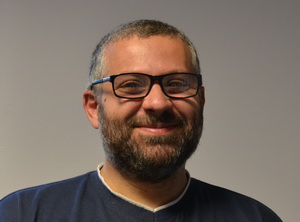
photo : Mat Irvine
THE CHANGING VIEW OF THE SOLAR SYSTEM
- AS SEEN BY THE SKY AT NIGHT
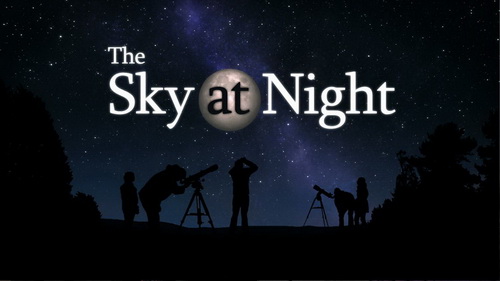
Over the 60+ years of The Sky at Night, the programme has covered the Solar System many times. We will see contrasting episodes - 40 years apart! The first is from 1975 : 'The OUTER PLANETS', compared to one from 2017 : 'INTO THE DARK ZONE'
This meeting has moved from September and November 2018
March 21st
George Emsden
photo : Mat Irvine
PROJECT ECHO
The first communications satellite to be launched. It was a 'passive' satellite - in that it purely bounced signals - as against re-transmitting them, which 'active' satellites do. Echo was nevertheless an important milestone to world communications. George tells the story
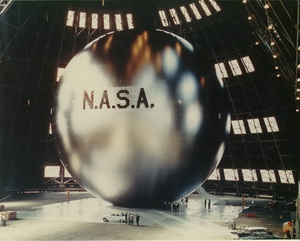
WEDNESDAY April 24th
CHANGE to the date and location
Observing Evening
hosted by
Jim Webb
Kyri Voskou
Alister Innes
(click sign for RGM's own site)
photo : Mat Irvine
OBSERVING EVENING

At the ROYAL GUNPOWDER MILLS, Waltham Abbey
Currently - rendezvous in the car park - orange arrow
If you could require transport or need more details, contact the Chairman
or 07801.577210
May 16th
Mat Irvine
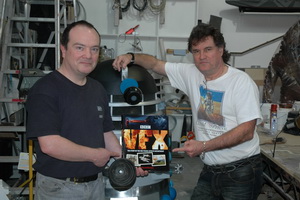
photos : Mat Irvine
CAUSE & EFFECT
The story of the BBC Visual Effects Department
Partially based on the book by Mat Irvine and Mike Tucker - 'BBC VFX'

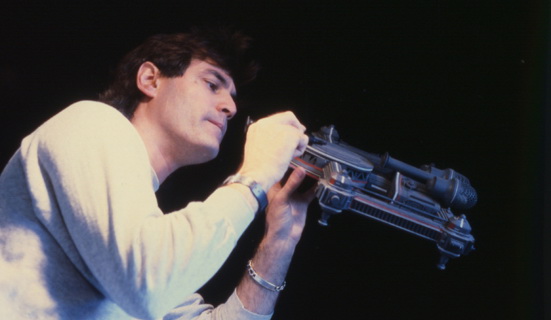
and yes - lots of science fiction.....
June 20th
Jerry Stone
photo : Mat Irvine
right : NASA
THE FIRST MEN ON THE MOON - 50 YEARS ON
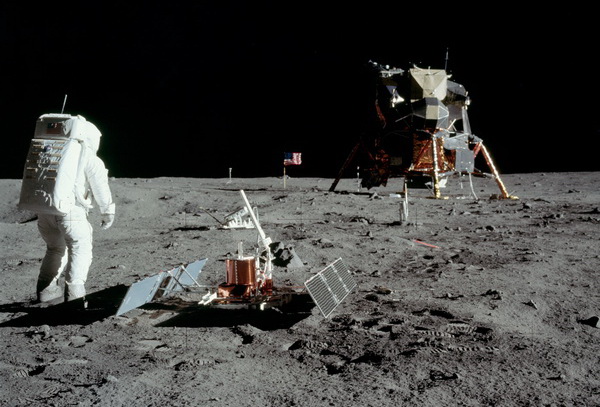
July and August
Summer Break
 photo : Mat Irvine
photo : Mat Irvine
September 19th
Dale Baker
photos : Mat Irvine
ANDERSON IS GO...!

November 21st
Mat Irvine
photos : Mat Irvine
THE CRADLE OF AVIATION
One of Mat's 'MAT' talks - or Mat's Astro Tours - a look round the Cradle of Aviation Museum on Long Island, NY - home of Grumman Aviation - that built the Apollo Lunar Module
January 17th
Dr Simon Drake & 
Dr Andrew Beard 
THE SKYE METEORITE
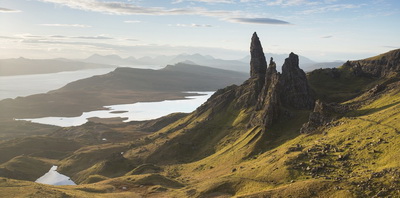
The discovery of a meteor impact on the Isle of Skye caused much interest in the geological - and astronomical - communities, leading to the work done by our two speakers. The results have only recently been published in scientific journals, so we will be the first Society to hear the details
SATURDAY January 27th
Alister Innes

OBSERVING EVENING
CANCELLED
There will an Observing Evening with the hope of seeing the very close encounter of the bright star Aldebaran with the Moon.
Meet at the Society's Observing Site in Barnet - click here for details - at 17.00hrs/ 5pm as the event takes place at 18.00hrs.
Other sites to possibly view, will be the Hyades and Plieades star clusters and the two bright craters on the Moon - Tycho and Copernicus
February 15th
Dale Baker
RAY HARRYHAUSEN - THE MONSTER MOVIE MAKER
Dale continues with more stories of his autograph hunting amongst the rich and famous - with time time concentrating on one of the most famous - animator Ray Harryhausen.
And if you don't know the name you will know the movies - including
7th Voyage of Sinbad; Jason and the Argonauts; Clash of the Titans
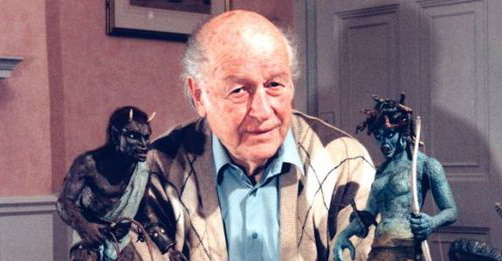
March 15th
Mat Irvine
THE VIEW FROM SERENDIP December 12th, 2017 would have been the 100th birthday of our late Patron, so for most of 2018, we are still 'in the year'. Two achievements of Arthur's possibly stand out - amongst the general public anyway - the 'invention of the communications satellite' and his work on 2001 : A Space Odyssey - but there was much more besides. Come along to hear much more about this extraordinary visionary |
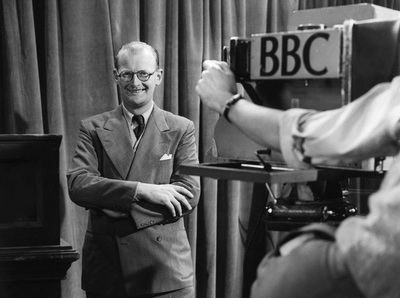 |
April 19th
Hosted by Chairman
Jim Webb
OBSERVING EVENING
After some changes - the Observing Evening WILL now take place on the scheduled date - at the Viewing Site (click for details on how to get there) The scene - skies permitting - should look similar to the image - taken a month ago, 19th March, with a three-day old Moon and a bright Venus. And there will be a lot more to discover as well
May 17th
Hosted by Chairman
Jim Webb
OBSERVING EVENING
As the April Observing Evening went so well, another one for May - before the skies get too bright in the evenings. Check OBSERVING for maps and details.
The Moon - skies permitting - should look similar to the image - a very thin crescent as the Moon is but 2 days old - and it will be very close to Venus.
And there will be a lot more to discover as well
June 21st
Dale Baker
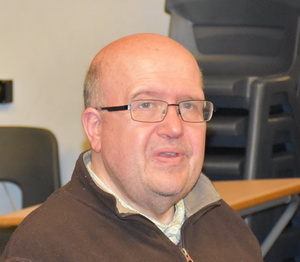
RAY HARRYHAUSEN - THE MONSTER Dale continues his intriguing look at one of the pioneers of movie special effects. This time he concentrates on Ray Harryhausen's later movies - his last one being The Clash of the Titans |
 |
July and August

SUMMER BREAK
No meetings these months
September 20th
Greg Smye-Rumsby

CAN WE LIVE ON MARS?
The talk will be about the many problems with the prospect of living on Mars. From the lack of a protective magnetic field, poisonous atmosphere, lack of plant- growing sunlight and, (possibly the most devastating), the complete lack of pubs. Permanent occupation of Mars by humans may not be a possibility... Greg works at the Royal Observatory Greenwich presenting planetarium shows, school workshops, adult evening classes and occasionally presenting on radio and television. He also work for Astronomy Now magazine, creating artwork and writing articles. He's given many lectures at various venues over the years, including the Society. |
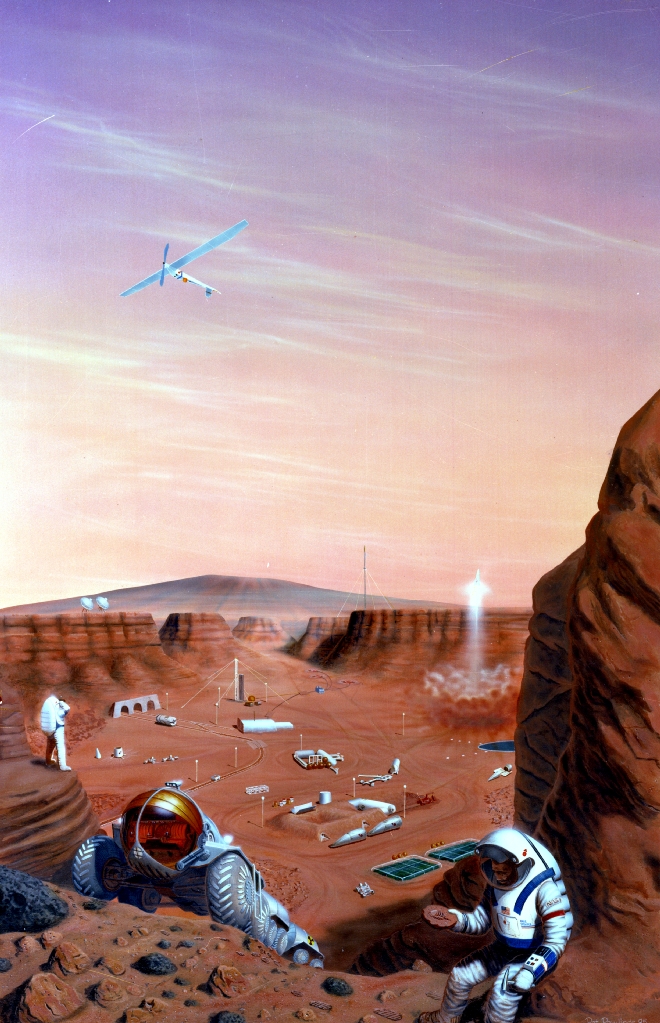 |
FRIDAY October 19th
Alister Innes
OBSERVING EVENING
AT THE BARNET VIEWING SITE - SEE OBSERVING
MEET AT 8.00PM
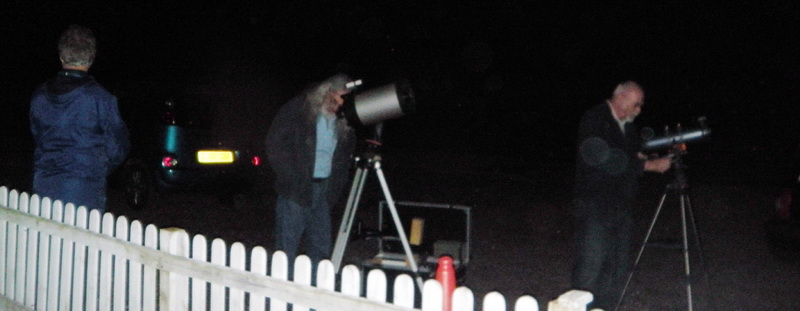
November 15th
Jerry Stone
THE APPROACH OF APOLLO
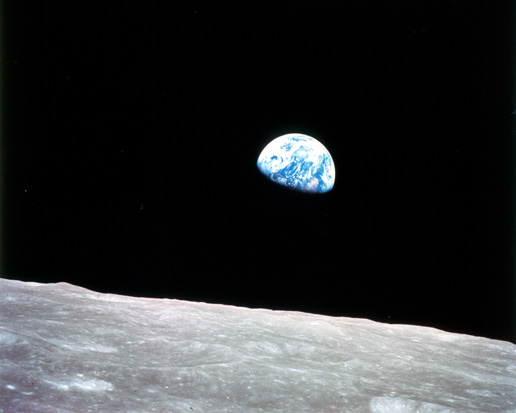
As we approach the 50th anniversary of the Apollo 11 in July 2019, the first Apollo flight away from the Earth was Apollo 8 in December 1968. Jerry takes a look at that mission, and the built-up to the actual landing, half a year later
December
WINTER BREAK
No meeting this month
previously for 2017
January 12th
Jim Webb & Alister Innes
OBSERVING EVENING
Meet at the Observing Site at the earlier time of 18.00hrs, 6.00pm
POSTPONED
January 19th
Dale Baker

SIGN HERE PLEASE
Society member Dale Baker collects autographs - but there's far more to it than that!
The Society is well known for its eclectic talks, and here certainly is one as Dale will tell stories, show clips and - maybe - even reveal a few secrets (!) of our on-screen Science Fiction heroes.
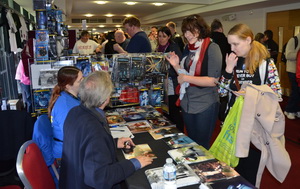
February 9th
Jim Webb & Alister Innes
OBSERVING EVENING
Meet at the Observing Site at the earlier time of 18.00hrs, 6.00pm
February 16th
Jim Webb

CASSINI - GRAND FINALE
The Saturn Cassini probe has only a few month left - it will be steered to destruction in the Saturnian atmosphere in September 2017. It has been in space for 20 years and has been one of the most successful planetary probes ever.
Jim will be examining the legacy and what will be happening in the next few months.

March 16th
Mat Irvine
L.A. CONFIDENTIAL
A recent visit to the 'City of Angels' involved an eclectic mix of scenes...
No not the Oscars, but instead the Griffith Observatory (left) and its recently-built basement exhibition on the Solar System and a private conducted tour of the Jet Propulsion Laboratory! Oh and K-9 happened to be visiting as well. All will be revealed at the meet!

April 1st
Wayne Johnson
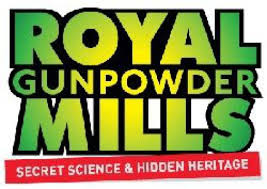
OBSERVING EVENING
at the Royal Gunpowder Mills

Royal Gunpowder Mills, Beaulieu Drive, Waltham Abbey,EN9 1JX
April 20th
Michael Franks
NEWS FROM THE CAPE
Michael continues his latest visit to the Kennedy Space Center, as featured in 2002, January and February, with more stories and photos
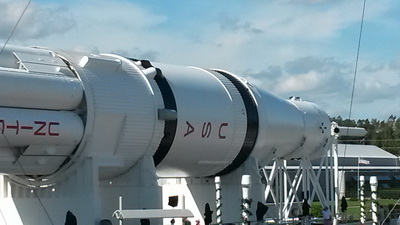
May 18th
Jim Webb & Alister Innes
TELESCOPE MASTERCLASS
We often assume all Society members automatically know all there is to know about telescope and viewing, but of course they may not, and anyway new members arrive, and they may not be fully knowledgeable as to 'how to get the best out of your instrument'!
So for this meeting, Observing Officers Jim Webb (right) and Alister Innes (left) will take you through the basics, including the different types of 'scopes and lenses, and of course that a good pair of binoculars are also very useful for viewing the heavens
June 15th
George Emsden
SETI@HOME
This slightly enigmatic title refers to the fact that firstly SETI - the Search for Extraterrestrial Intelligence - is still alive and well, and now through BOINC (Berkeley Open Infrastructure for Network Computing) anyone with spare downtime on their home computer (and most home computers are only used at 1% of their capacity) can join in the search.
Past ASH member George Emsden, who participates in the exercise, will show how it is all achieved!
September 21st
DARKNESS VISIBLE
POSTPONED until October
October 5th

DARKNESS VISIBLE
Early date to coincide with SPACE WEEK
Includes the AGM A round-up of the Total Solar Eclipse that will have occurred over a wide swath of the United States on 21st August - moved from September
(Image shown from the 2006 total eclipse)
October 19th
Alister Innes, Kyri Voskou and Jim Webb
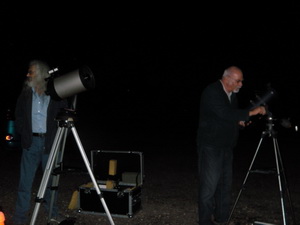
OBSERVING EVENING
Held at the Barnet Site,
see OBSERVING for location maps and details
Any enquiries, email observing@ashastro.co.uk
During the evening it hoped we can spot both the outer planets - Uranus and Neptune
November 16th
Jerry Stone
TIME and SPACE
Our measurements of time have largely been derived from our observations of space. In addition, simple astronomical observations and timings can tell us remarkable things about Earth’s orbit around the Sun.
Astronomy gave us our day, month and year - though these divisions of time don’t last as long as most people think! There are other planets, where days and years are very different to those on Earth, so time really does depend on where you are in space.
Take a journey into time and space with Jerry Stone and find out how they are intertwined. Click here for a downloadable pdf that explains more
Saturday
November 18th
Members of the Society
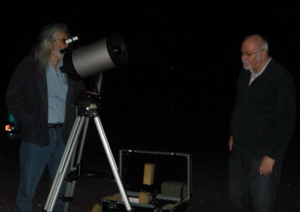
OBSERVING EVENING
This is a first being held on a SATURDAY - we will see how this goes
But potentially a good viewing opportunity, with the Moon being close to new
The outermost planets, Uranus and Neptune, are both well placed for viewing and there is Comet 2107 O1 (ASASSN) near the Pole Star as a possible target
